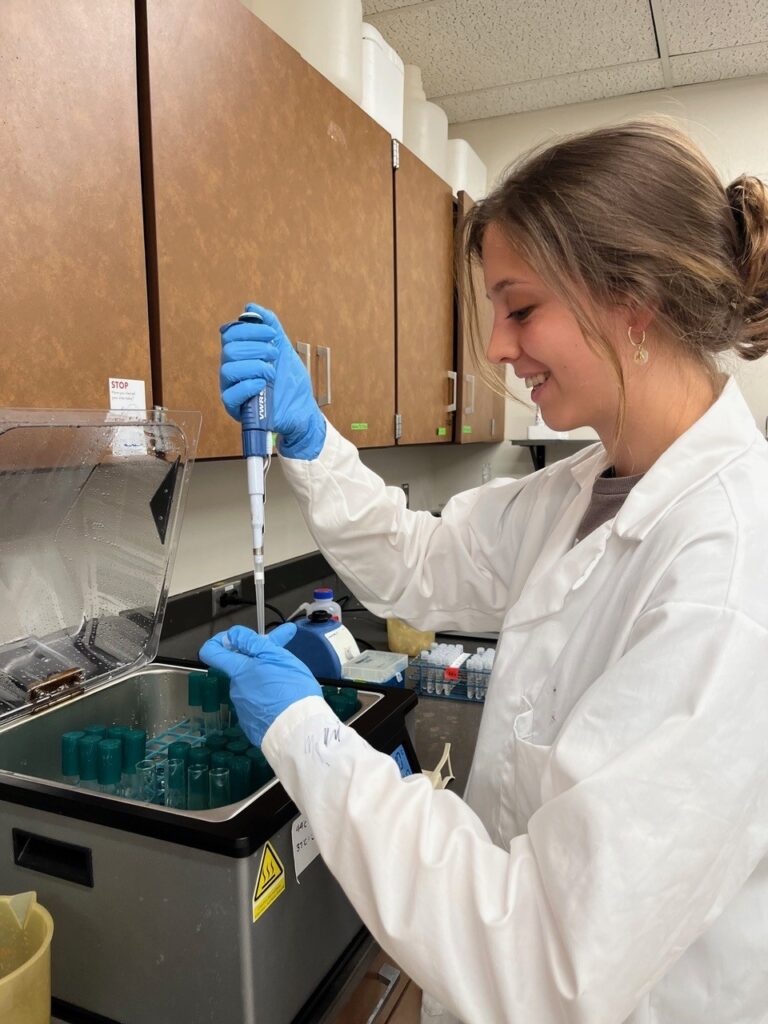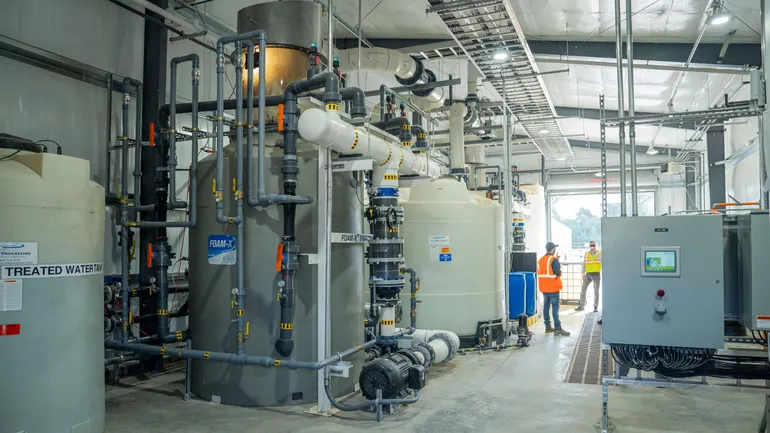Salem considers declaring drinking water emergency ahead of Detroit Lake deep drawdown – Oregon Public Broadcasting – OPB

Report on the City of Salem’s Water Emergency Declaration and its Implications for Sustainable Development Goals
Executive Summary
The City of Salem is poised to declare an emergency for its water system in response to a planned deep drawdown of the Detroit Lake Reservoir. This action, mandated by the U.S. Army Corps of Engineers (USACE) to aid endangered salmon, creates a significant conflict between several United Nations Sustainable Development Goals (SDGs). The core of the issue is the clash between protecting aquatic ecosystems (SDG 14) and ensuring access to safe drinking water (SDG 6) for a large urban population, thereby threatening the resilience of sustainable communities (SDG 11).
The Central Conflict: SDG 6 vs. SDG 14
The proposed reservoir drawdown highlights a direct tension between critical environmental and social sustainability objectives.
- SDG 14 (Life Below Water) & SDG 15 (Life on Land): The drawdown is an initiative required by the National Marine Fisheries Service to facilitate the passage of endangered salmon species in the North Santiam River. This action aligns with targets for conserving and restoring freshwater ecosystems and protecting marine life.
- SDG 6 (Clean Water and Sanitation): The drawdown is expected to release substantial sediment, causing elevated river turbidity. This poses a severe threat to the slow sand filters at the Stayton water treatment facility, which could lead to a failure of the system responsible for supplying safe drinking water to approximately 200,000 people in Salem and Stayton. This directly jeopardizes the achievement of Target 6.1, ensuring universal access to safe and affordable drinking water.
Impacts on Sustainable Cities and Communities (SDG 11)
The potential failure of the water treatment plant presents a multi-faceted threat to the sustainability and resilience of the affected communities, in direct opposition to the aims of SDG 11.
Key Risks Identified:
- Critical Infrastructure Failure: The City of Stayton has warned of “catastrophic consequences,” including the failure of its drinking water plant, which would leave residents, emergency services, and wastewater systems without water.
- Public Safety: The proposed emergency declaration by Salem notes that a decreased water supply could severely impact firefighting resources, reducing the community’s capacity to respond to emergencies.
- Limited Alternatives: Available alternative water sources are reportedly insufficient to meet demand during the drawdown period, further increasing the vulnerability of the urban area.
Institutional Response and Governance (SDG 16 & SDG 17)
The situation has prompted a series of actions from local and federal bodies, reflecting the role of institutions in managing complex sustainability challenges.
- The City of Stayton formally urged the USACE to reconsider the drawdown due to the anticipated failure of its water treatment infrastructure.
- The USACE has postponed the drawdown, originally planned for 2025, to at least fall 2026 to allow for further assessment of its impacts.
- The City of Salem is now considering a formal emergency declaration to proactively manage the threat, demonstrating an institutional response in line with SDG 16 (Peace, Justice and Strong Institutions).
This conflict underscores the critical need for effective partnerships (SDG 17) between local municipalities and federal agencies to develop integrated solutions that balance competing environmental and human needs.
Proposed Emergency Measures
If adopted, the emergency declaration would grant the Salem city manager authority to:
- Activate the city’s emergency operations center.
- Dedicate city funds to mitigate the threat to the water supply.
- Work with regional partners to develop a more resilient alternative water source.
The Salem City Council will convene to decide on the resolution, which represents a critical step in the city’s strategy to ensure water security and community resilience.
Analysis of SDGs, Targets, and Indicators
1. Which SDGs are addressed or connected to the issues highlighted in the article?
- SDG 6: Clean Water and Sanitation: This is the most prominent goal, as the article’s central theme is the threat to the drinking water supply for the cities of Salem and Stayton. The potential failure of the water treatment plant due to increased turbidity directly relates to ensuring the availability and sustainable management of water.
- SDG 11: Sustainable Cities and Communities: The article discusses the resilience of urban infrastructure. The potential crisis affects 200,000 people, threatens the city’s water system, impacts essential services like firefighting, and prompts the city to consider an emergency declaration to build a “more resilient alternative water supply.”
- SDG 14: Life Below Water: The reason for the reservoir drawdown is explicitly stated as an effort “to help endangered salmon.” Salmon are anadromous fish, connecting freshwater and marine ecosystems, making their conservation relevant to this goal, which focuses on the sustainable use of oceans, seas, and marine resources.
- SDG 15: Life on Land: This goal includes protecting, restoring, and promoting the sustainable use of terrestrial ecosystems, including freshwater ecosystems and their biodiversity. The action to protect an “endangered salmon” species by altering a freshwater reservoir directly falls under the objective of halting biodiversity loss.
2. What specific targets under those SDGs can be identified based on the article’s content?
- Target 6.1: “By 2030, achieve universal and equitable access to safe and affordable drinking water for all.” The article highlights a direct threat to this target, stating the drawdown could “impact the drinking water for 200,000 people in Salem and Stayton” and that “sediments will cause the city’s drinking water treatment plant to fail.”
- Target 11.5: “By 2030, significantly reduce the number of deaths and the number of people affected… by disasters, including water-related disasters.” The potential failure of the water supply is described as a “catastrophic consequence” and a “severe threat,” which constitutes a water-related disaster. The city’s emergency declaration is a measure to mitigate its effects on the population.
- Target 11.b: “By 2020, substantially increase the number of cities and human settlements adopting and implementing integrated policies and plans towards… resilience to disasters.” The proposed emergency declaration aims to “dedicate city funds to reducing the threat, and to work with others to develop a more resilient alternative water supply,” which is a direct implementation of a plan for disaster resilience.
- Target 15.5: “Take urgent and significant action to reduce the degradation of natural habitats, halt the loss of biodiversity and, by 2020, protect and prevent the extinction of threatened species.” The entire reason for the drawdown is an action taken by the U.S. Army Corps of Engineers “to help endangered salmon,” which directly aligns with protecting a threatened species.
3. Are there any indicators mentioned or implied in the article that can be used to measure progress towards the identified targets?
- Indicator for Target 6.1: The article mentions “elevated river turbidity levels” as a specific, measurable indicator of water quality degradation. The operational status of the “slow sand filters at its water treatment plant” serves as an indicator of the system’s capacity to provide safe water. The number of people whose water supply is threatened, “200,000 people in Salem and Stayton,” is a direct indicator of the population affected.
- Indicator for Target 11.5: The “number of people affected” is explicitly stated as 200,000. The potential impact on “firefighting resources” is an implied indicator of the disaster’s effect on a city’s critical emergency services.
- Indicator for Target 11.b: The “emergency declaration” itself is an indicator of a city adopting a plan for resilience. The development of a “resilient alternative water supply” would be a measurable outcome of this plan.
- Indicator for Target 15.5: The status of the “endangered salmon” population is the key implied indicator. While the article does not provide population counts, the classification “endangered” serves as a baseline indicator of the species’ threatened status, which the drawdown action aims to improve.
4. Table of SDGs, Targets, and Indicators
| SDGs | Targets | Indicators |
|---|---|---|
| SDG 6: Clean Water and Sanitation | 6.1: Achieve universal and equitable access to safe and affordable drinking water for all. |
|
| SDG 11: Sustainable Cities and Communities |
11.5: Significantly reduce the number of people affected by disasters, including water-related disasters.
11.b: Increase cities adopting and implementing plans for resilience to disasters. |
|
| SDG 14: Life Below Water & SDG 15: Life on Land | 15.5: Take urgent action to halt the loss of biodiversity and protect threatened species. |
|
Source: opb.org

What is Your Reaction?
 Like
0
Like
0
 Dislike
0
Dislike
0
 Love
0
Love
0
 Funny
0
Funny
0
 Angry
0
Angry
0
 Sad
0
Sad
0
 Wow
0
Wow
0











































































